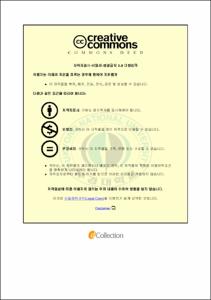선박의 에너지효율운항지수 계산식의 수정 제안과 CO2 배출량 저감에 관한 연구
- Abstract
- Global warming caused by climate change has become a lot of concerns and IMO is making much efforts to reduce Greenhouse Gas from international shipping. The primary greenhouse gas in the Earth's atmosphere is carbon dioxide(CO2). MARPOL Convention had been amended by IMO and introduced requirement of EEDI as technical measures and SEEMP & EEOI as operational measures. However, EEDI applies only for new ships alone as mandatory requirements, which is not considered helpful for reducing greenhouse gas emission from international shipping. For substantial reducement of greenhouse gas emission from international shipping, it is believed that mandatory application of MBM and EEOI will be more effective as a means of efficient operation of MBM. In order to review the above mentioned study, the author carried out a serious of research process as follows:
In the first place, for a legal research on technical measures, operational measure and market-based measure to reduce greenhouse gas emissions from ships, this study has reviewed the international efforts of greenhouse gas emission reductions.
Secondly, this study has reviewed technical measure(EEDI) and operational measure(SEEMP & EEOI) which are implemented by IMO and has also reviewed the various measures which would be applicable to real ships to reduce greenhouse gas emissions. this study has analyzed the EEOI for real ships and raised the problem. Based on this study, the author proposed the modified EEOI and it is applied the real ships. As a result, the author confirmed that the modified EEOI can be a resonable rate of CO2 emission.
Thirdly, this study was examined reduction countermeasures of CO2 emission as electronic control engine, shore power, trim optimizing, propeller polishing, hull cleaning and anti-fouling paint. Electronic control engine and cam control engine analysis has been taken place using actual sea going vessel. Sets of experiment has been taken place and the outcome of engine power, specific fuel oil consumption, CO2 emission have been analysed accordingly. In result, compared to cam control engine, electronic control engine is found to be more efficient in reducing CO2 emission and specified fuel oil consumption.
In this study, shore power efficiency was examined. Shore power is not common on merchant ships as it involves switching all its independent internal power sources when the ship is in harbor. As a result, shore power saved consumption of fuel that would be used to power vessel while in port and eliminated the air pollution resulted from consumption of that fuel. And then, fuel saving by trim optimization was tested by existing ship. the hydrodynamic efficiency of a vessel may be significantly affected by trim. Awareness of the vessel performance in different trimmed conditions is an essential step towards improving the operational efficiency and reducing the fuel consumption and corresponding emission to air. In addition, fuel saving was examined by hull and propeller cleaning and polishing. Also anti-fouling paint is a specialized coating applied to the hull of a ship in order to slow the growth of organisms that attach to the hull. And it can affect a vessel's performance and durability. As a result, those saved fuel consumption and reduced CO2 emission.
Lastly, the technology to reduce CO2 emission from ships is developed and EEOI must be improved in view of the ship's operational aspects as soon as possible. Also we must work hard to apply the reduction countermeasures of CO2 emission to the existing ships. In the future, further research will be necessary to reduce CO2 emission.
- Issued Date
- 2014
- Awarded Date
- 2014. 2
- Type
- Dissertation
- Publisher
- 부경대학교
- Affiliation
- 대학원
- Department
- 대학원 제어기계공학과
- Advisor
- 고대권
- Table Of Contents
- 목 차
Abstract ⅳ
Nomenclature ⅵ
Abbreviation ⅸ
제 1 장 서 론 1
1.1 연구 배경 1
1.2 연구 목적 4
1.3 논문의 구성과 내용 5
제 2 장 IMO의 선박배출 CO2의 규제 동향 및 문제점 6
2.1 서언 6
2.2 IMO의 환경규제 진행 현황 9
2.3 선박 배출 CO2의 규제 내용과 문제점 11
2.3.1 EEDI의 문제점 및 파급효과 11
2.3.2 SEEMP와 EEOI의 문제점 및 파급효과 16
2.3.3 MBM 19
2.4 결언 27
제 3 장 선박의 EEOI 계산식에 대한 수정 제안 28
3.1 서언 28
3.2 EEOI의 개념 29
3.2.1 EEOI 기본식 29
3.2.2 연료에 따른 CO2 환산계수(CF) 31
3.2.3 선박종류 및 화물유형 32
3.3 운항선에 대한 EEOI 계산 34
3.3.1 운항선 적용 결과 34
3.3.2 운항선 EEOI 계산 결과 고찰 42
3.4 수정 EEOI의 제안 및 적용 결과 43
3.4.1 EEOI 계산식의 수정 제안 43
3.4.2 수정 EEOI 계산식의 적용 44
3.4.3 수정 EEOI 계산식의 적용 결과 및 고찰 51
3.4.4 수정 EEOI 예상 파급효과 53
3.5 결언 54
제 4 장 선박의 CO2 배출량 저감 대책 55
4.1 서언 55
4.2 전자제어 엔진 사용 57
4.2.1 기계식 엔진과 전자제어 엔진의 배기오염물질
배출특성 57
4.2.1.1 실험 장치 및 방법 58
4.2.1.2 실험 결과 및 고찰 65
4.2.2 기계식 엔진과 전자제어 엔진의 성능 비교 및 분석 72
4.2.2.1 실험 장치 및 방법 72
4.2.2.2 실험 결과 및 고찰 73
4.2.3 전자제어 엔진 사용이 EEOI 저감에 미치는 영향 86
4.3 정박 중 선박의 육상전력 사용 87
4.3.1 실험 방법 87
4.3.2 실험 결과 및 고찰 91
4.4 트림 최적화 102
4.4.1 실험 방법 103
4.4.2 실험 결과 및 고찰 103
4.4.3 최적 트림이 EEOI 저감에 미치는 영향 106
4.5 연료절감형 방오도료 사용 107
4.5.1 실험 방법 108
4.5.2 실험 결과 및 고찰 112
4.5.3 프로펠러 연마, 선체 정비 및 방오도료 사용이
EEOI 저감에 미치는 영향 115
4.6 결언 116
제 5 장 결 론 118
참고 문헌 120
- Degree
- Doctor
- Files in This Item:
-
-
Download
 선박의 에너지효율운항지수 계산식의 수정 제안과 CO2 배출량 저감에 관한 연구.pdf
기타 데이터 / 7.48 MB / Adobe PDF
선박의 에너지효율운항지수 계산식의 수정 제안과 CO2 배출량 저감에 관한 연구.pdf
기타 데이터 / 7.48 MB / Adobe PDF
-
Items in Repository are protected by copyright, with all rights reserved, unless otherwise indicated.